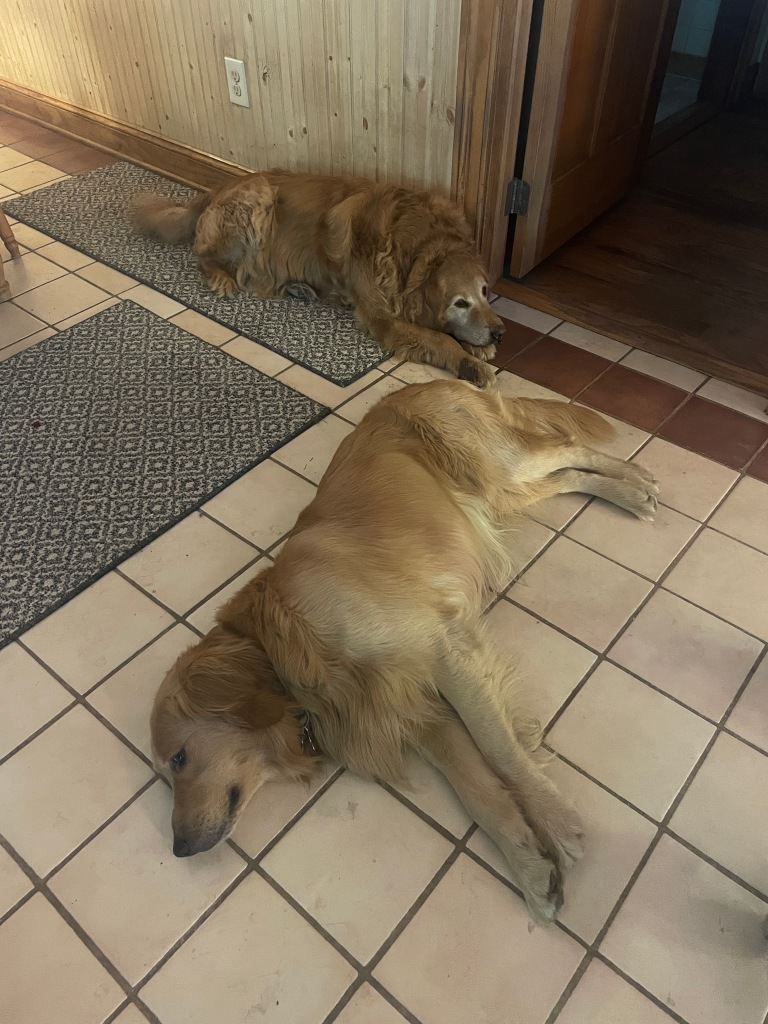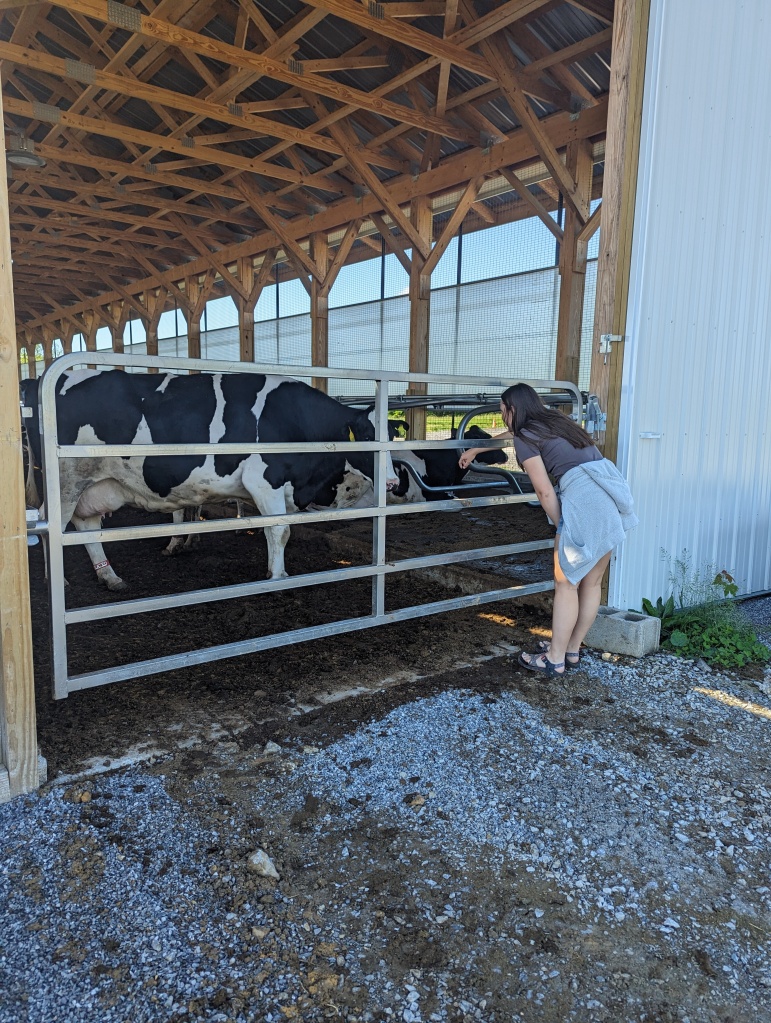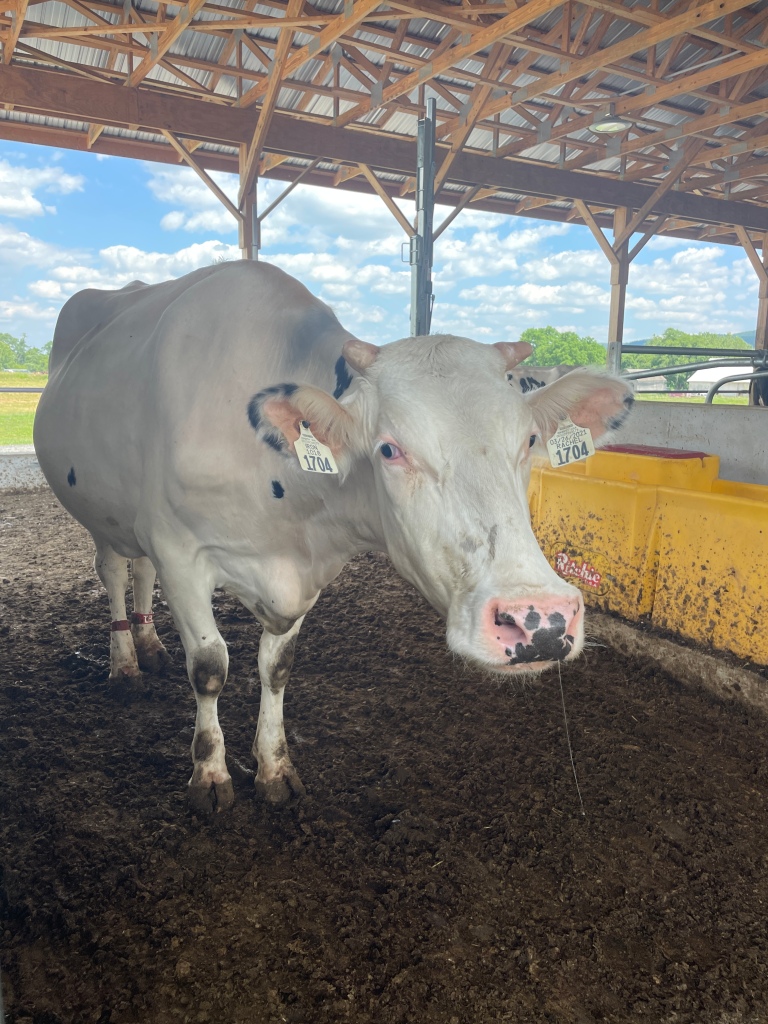Full Disclaimer: ChatGPT gave us the title – we aren’t that creative!
Welcome to the Benka-Coker Lab!!
Meet the Lab:
Dr. Benka-Coker: Welcome to our “lab”! I am a faculty member in the Health Science department and I’m also a Gettysburg alum! I have a Masters of Public Health degree in Global Health and a PhD in Environmental Health. My research focuses on quantifying the exposures from air pollution, primarily focusing on the harmful emissions of cookstoves in the global setting (my most recent field project was in Northern Ghana). I also research the health effects of air pollution exposures and work with governmental policymakers to advocate for cleaner-burning fuel alternatives that would improve human health.
Emily Lyons: Hello! I’m a rising junior and a health sciences major with neuroscience and education minors. On campus, I’m a member of the climbing club and the community service organization APO, and I work as an outdoor facilitator at the Garthwait Leadership Center. This summer, I’m working in Dr. Benka-Coker’s lab with Bramley!
Bramley Hawkins: Hi! I’m also a rising junior, with environmental science and biology majors and a data science minor. On campus, I’m a member of our Women’s Swim Team, I teach swim lessons to kids in the community through our Center for Public Service, and I work as a tour guide for our Admissions Office. This summer, I’m working in Dr. Benka-Coker’s lab with Emily!
What’ve we been working on?
This summer, we’re studying the effects of burning biogas for stovetop fuel on indoor air quality compared to natural gas, with the hypothesis that the biogas will release fewer nitric oxides and other pollutants that are harmful to human health into the air. Our work is a collaboration with Dickinson College and Matt Steiman (pictured below), the Energy and Livestock Manager at the Dickinson College Farm in Carlisle.
The first step of our project relies on the production of biogas! Farmer Matt has been a long-time advocate of biogas and a “waste to energy” model and his work is an essential part of our project this summer. (Take a listen to this April 2024 podcast interview with him and the new grant for the midscale biodigester on the Dickinson College Farm). Matt takes agricultural waste generated on the Dickinson Farm and local restaurants, including leftover crops, food waste, and cow manure, and pours it into an anaerobic digester. The bacteria in the digester break the material down, separating it into a bottom layer of sludge sediment that can be used as a fertilizer on future crops, and a top layer of biogas (diagram and the Dickinson College Farm Biogas Digester pictured below)! That’s the cool part- absolutely everything gets used. If the digester weren’t in use, this waste would’ve broken down outside, releasing methane into the open air. Instead, CO2, a significantly less potent greenhouse gas, is released by burning the biogas in stoves. By using the digester, all of that CO2 and methane gets captured and repurposed instead!
Once all the biogas is made and ready for use, our task is to see what happens when we burn it. We’ve got some fantastic participants for that purpose; a couple of households with access to biogas, and the apprentices on the Dickinson College Farm. In our experimental setup, we will measure pollutants in the air under two conditions; biogas and natural gas. Our participants will first cook only with biogas for 72 hours, and then they will cook using natural gas for 72 hours. There will be a “washout” period in between the two experimental conditions.
Bramley cooking popcorn on a biogas stove, assisted by Matt and an apprentice.
In order to evaluate the pollution under both conditions, we will be using many different pieces of equipment that measure air pollution; the Home Health Box (NO2, gravimetric and continuous PM 2.5, VOC, CO2 inside the kitchen, pictured below), a temperature probe (to monitor stove use), the Ogawa Sensor (gravimetric NO2), the URAD monitor (ambient NO2, PM 2.5, CO2, VOC), and the PurpleAir Monitor (ambient PM2.5). These different particles are all produced from combustion. PM2.5 is ultra-fine particulate matter, less than 2.5 microns, which is small enough to enter the bloodstream after inhalation. VOC, volatile organic compounds, are chemicals found in everyday life that, when breathed in, can be harmful to health. NO2 is a compound that can irritate the respiratory system and it also contributes to the production of ozone. CO2 is a greenhouse gas that contributes to global warming. If you’re interested in learning more about what’s in our air and how it affects our health, check out the EPA’s introduction to indoor air quality! The monitors that collect gravimetric data are continuously pulling air into the machine, leaving matter on the filters placed inside. We will pre- and post-weigh the filters to see how much matter accumulated. Lots of our time has gone towards learning how to set up and use these monitors.
Benefits to the Environment
Biogas as a cooking fuel has a variety of applications. From an energy standpoint, biogas is a renewable resource, with digesters fed by manure, household scraps, and agricultural byproducts. The decomposition of these waste products would release methane, however, by using them as the feedstock for the digester, the biogas that is produced, when burned, releases CO2, which is a much less potent greenhouse gas than methane. The plants uptake the CO2 released by the combustion of biogas, and because organic material is the feedstock for the biogas digesters, biogas can be considered a carbon-neutral source. Biogas as a form of energy is great for our environment! Additionally, the byproducts of the digestion process can be used as fertilizer in the fields. And, when using fibrous manure as a feedstock, the byproducts can be dried out and turned into straw bedding for the cows to use. It is a very sustainable process.
Benefits for Human Health
Once the biogas is produced, it can either run a generator to produce electricity, or it can be used as is for activities like cooking and heating. This has global implications. In rural or impoverished areas, gas and electricity can be expensive, or not available. Because biogas digesters are relatively cheap and can be made with Big Blue Barrels and PVC pipes, it is a good solution for these hard-to-reach areas. Communities in rural areas of low and middle-income countries often rely on firewood or charcoal for their cooking and heating needs, both of which don’t burn cleanly, releasing harmful volatile organic compounds (VOCs), CO2, NOx, and particulate matter (PM) into the air. This poor air quality causes health issues such as increased rates of asthma, and heart and respiratory diseases. If you’re interested in learning more about the health impacts of global air pollution, check the information on State of Global Air. By switching to biogas, we can save our planet and the people who live on it cost-effectively and sustainably!
The friends we’ve made this summer (so far)
Mochi: our fantastic friend and an invaluable lab team member. He lives at one of our participants’ houses and has welcomed us with open arms (and mouth- sometimes he leaves his tongue sticking out).
The fish at the Huntsdale State Fish Hatchery: We had a free hour in the middle of one of our days out at the farm and had a lovely time feeding the fish


Baxter, Bear, and Sam: a trio of Golden retrievers who live near campus with a colleague who advocates for cleaner energy!


The cows at the Dickinson College farm: Our partners in biogas production! Their digestive systems are truly paving the way for our project to run, and we are eternally grateful for their contributions
The sheep at Dickinson College Farm: they are just cute and fluffy!


Sugar and Spice: Professor Benka-Coker is in the process of adopting two kittens😻
The whole lab, including our partners from Dickinson College! Here we are in front of one of the participant’s houses
Thanks for reading!! Come visit us at the poster session to see what we find!!



